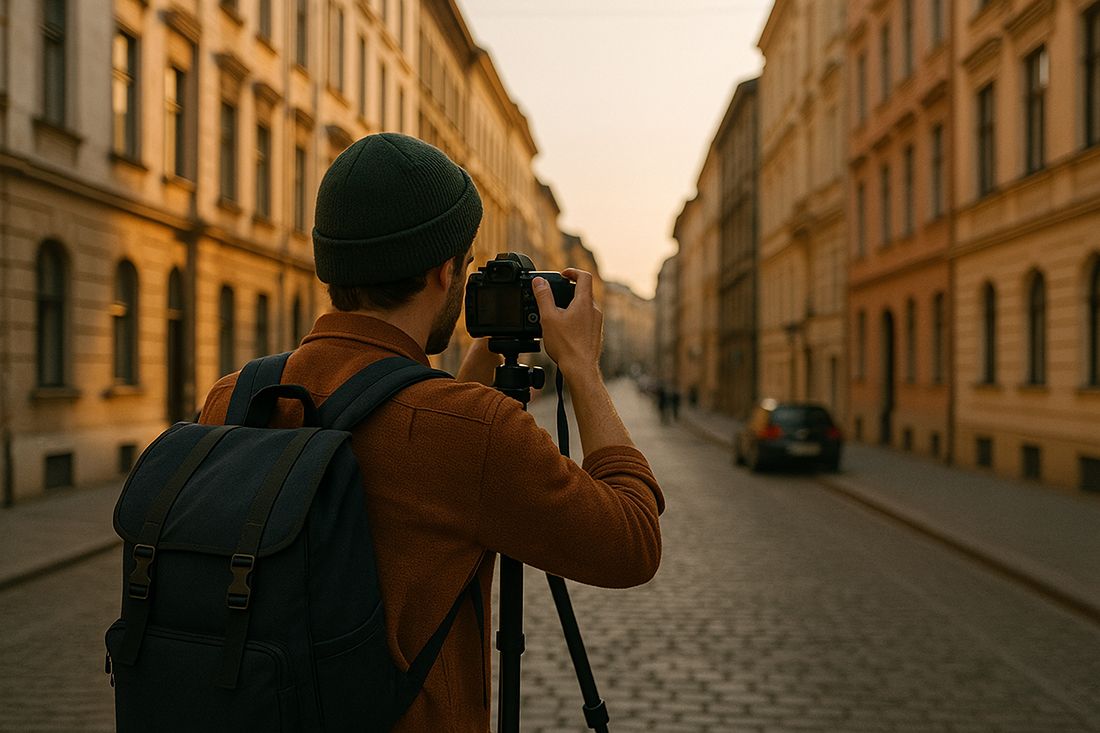

Travel Photographers.
Who they are?
Date of publication: 31 Mar 2025
These days, many people call themselves travel photographers. It sounds exciting – traveling the world with a camera, capturing stunning shots, living the dream. But the term often gets misunderstood. Some actually travel to shoot intentionally, carefully planning every trip. Others simply take nice photos on their phone while on vacation. There's a big difference.
This article is an honest take on what it really means to be a travel photographer: how they work, what they shoot, the challenges they face, and how they actually earn a living.
What is a travel photographer?
A travel photographer doesn't just happen to take photos while traveling. Travel itself is part of the job. The trip is built around photography – scouting locations, watching the light, prepping gear, and getting immersed in the story of a place.
Back in the day, travel photographers worked for magazines – long assignments, big editorial pieces. Today, with social media and instant content, the meaning of the term has expanded. More people are taking photos on the go and calling it travel photography. But the core hasn't changed: a true travel photographer is someone who tells stories through images – stories that last longer than the trip itself.
Travel photography is not generalist photography. In fact, it is a niche.– Brendan van Son, brendansadventures.com
Genres in Travel Photography
Landscape Travel Photography
This is the kind of photography where you wake up before dawn, hike up a mountain, and wait in silence for the right light, not knowing if it'll even show. It's slow, patient, and calm. It's not just about beautiful scenery. It's about how that place feels, how it breathes. Often, it's not the location itself, but how the photographer sees it.
Street Travel Photography
Street photography is the opposite – fast-paced, alive, full of moments that happen and vanish in seconds. It's about people, cities, and stories unfolding in front of you. But this genre comes with responsibility. If someone appears clearly in your frame, they have the right to know. Asking for permission isn't awkward – sometimes it opens up a whole new connection.
Street travel photography also includes architecture, daily details, and the rhythm of life. Shop signs, balconies, kids playing, bikes leaning against walls – it's all part of the vibe. But always with respect. You're a guest in someone else's everyday world.
Legal Stuff
You can't just show up in a foreign country and start shooting professionally. For example, in Thailand, if you photograph clients for money without a work permit, it's illegal. You could face fines or even deportation.
Germany is stricter. If someone is identifiable in your photo and you post it publicly, you legally need their permission. Even street shots that seem harmless could get you in trouble.
Each country has its own rules. If you plan to shoot commercially, know them. It's not just about protecting yourself; it's also about respecting the places you work in.
Ethics
Travel photography is always about people and places. And if you really want to capture the spirit of a place, remember – you're a visitor. In a foreign town, a different culture, around people who never asked to be photographed.
Not everyone wants to be in your frame – and that's okay. Especially kids, older folks, or just anyone caught off guard. When in doubt, ask. A smile and a few kind words can go a long way. Sometimes, that simple exchange turns into a meaningful photo, one with depth and connection.
Some moments shouldn't be photographed at all. Poverty, grief, sacred rituals – they're not props. If you're unsure whether you should shoot it, maybe it's better not to.
Nature deserves just as much respect. Don't climb fences or crush plants for a better angle. Leave no trace. Ideally, no one should even know you were there. That's not dramatic – it's just responsible photography.
Ethics isn't about rules. It's about how you carry yourself. When you shoot with empathy, it shows in the photo and in how people treat you. And that's the whole point: to really see, to care, and not to take more than you give.
How Travel Photos Are Used
Landscapes
Landscape photographers often sell prints online, in galleries, or through exhibitions. Some publish books or calendars. Others license their images for editorial or commercial use. Stock sites are an option, too, though it's competitive and takes volume.
Street Photography
Street photos are more personal. They're about expression, not mass sales. You'll see them in zines, galleries, blogs, or photography books. Sometimes they get published by editorial outlets, but rarely sold as stock. If there are recognizable people, get their consent before sharing publicly.
Portraits and Travel Sessions
This is often done by photographers who announce upcoming travel to a location and offer bookings. Think couples, weddings, and solo portraits. Clients usually find the photographer via social media or ads. The shoot is planned, and the images are for personal use or publication by mutual agreement.
How Travel Photographers Make a Living
Most travel photographers don't rely on one income stream. It's a mix – and everyone builds their setup:
- Photo tours & workshops – where you guide others and teach while exploring.
- Prints & books – selling fine art prints, photo books, or calendars.
- Online courses – video tutorials, PDFs, or membership platforms like Patreon.
- Stock & licensing – selling usage rights to websites, brands, or media.
- Brand work – shooting for tourism boards, hotels, or gear companies.
- Blogging / YouTube – monetized through ads, affiliate links, or sponsorships.
- Direct support – donations or subscriptions from followers who want more access.
Yes, you can earn a living from travel photography. But it's not about getting lucky. It's about consistency, building trust, and treating it like the job it is, not a fantasy.
My Take: Why I Don't Call Myself a Travel Photographer
I don't call myself a travel photographer, even though I shoot in different countries. Why? Because I don't travel to take photos, I take photos where I live and work. I spent years in Ukraine, then in Thailand, and now I'm in Portugal. In each place, I stay long enough to build something real: advertising, a local network, an online presence, and clients. Only then comes the photography.
I travel for work. But I don't travel to work. That's a big difference.
Travel photography isn't a dream life with a camera. It's a real job. It's hard, rewarding, and sometimes exhausting. It's constant learning, planning, and showing up – with or without the perfect light.
If you love it – deeply love it- it will give you something real in return – not just memories but meaning.

